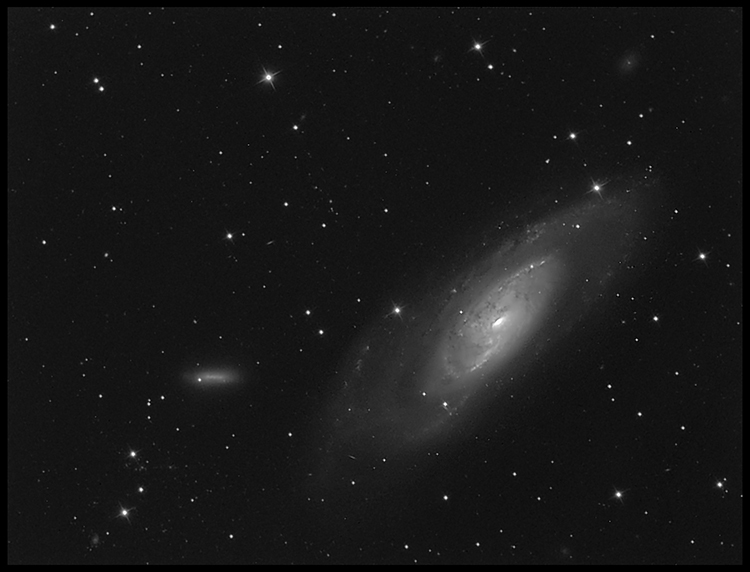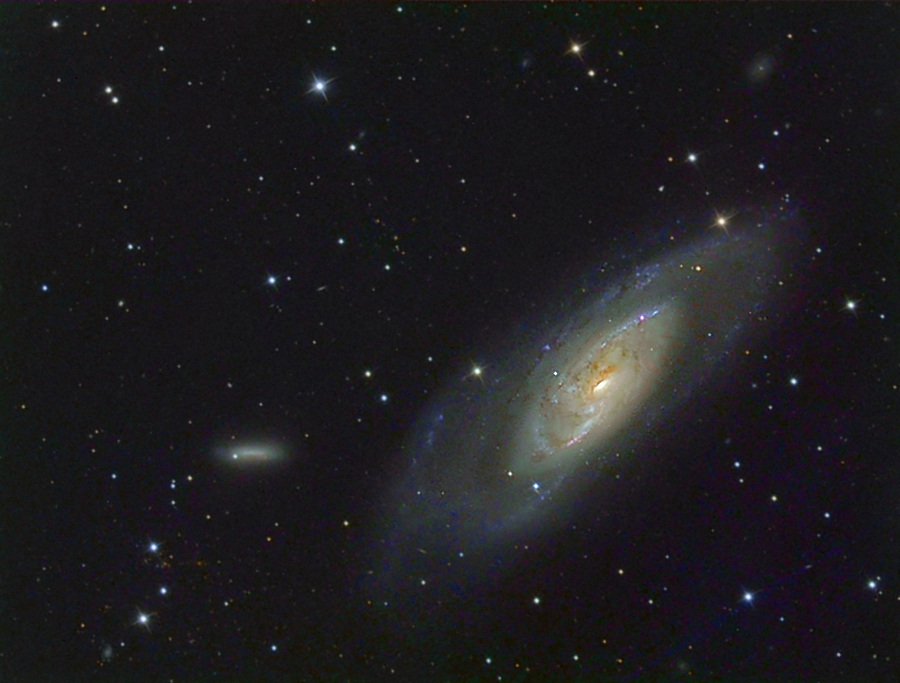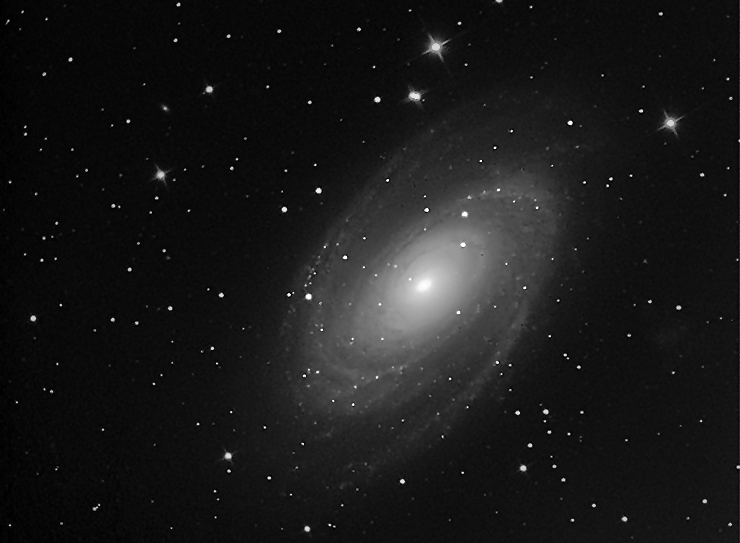03/07/2013. Back under the stars with a new left hip as of 2/12/2013. I have to make my way out to the telescope carefully, always slowly and with a cane, but once there it's all very familiar. After a leisurely day reconnecting wires, setting up the replacement A-P keypad, remembering how Maxim likes to work, I am back in business, sitting in the office with coffee and a cat, collecting starlight.
I started with my first look at Comet ISON, faint and almost half a billion miles distant in Auriga, but coming our way for a grand show --one hopes!-- around Thanksgiving. I damn near missed it (am I using old orbital elements?), but found it by blinking early and late images in the 2 hour stack of twenty-four 5 minute frames, shown here aligned on the comet (intersection of the red tick marks):

03/09/13. I moved on to M106 after shooting the comet, and added more data the next night. This is a lovely, intricate Seyfert galaxy that I have long neglected, close enough to resolve star-forming regions and some detail around the brilliant core. Here's two nights of luminance data, 7h 15m worth, made 15 minutes at a whack. The Comet ISON and M106 images were both captured with the AT10RC working near F4.8. Tracking was about the best ever; I saw RMS guide corrections (once every 10 seconds) of <0.2 pixels in both axes all night long.

I have decent color data to add to this, but the tri-color result so far is not quite so gratifying as the smooth monochrome version above. At full-res, the 16-bit version of this image seems to show hundreds of background galaxies, especially in the lower left. How to be sure? More exposure, of course.
Layering in the best color data so far (3x900s RGB) we get this:

(Right click and view image for a slightly larger version.)
After reviewing the very busy flats, I removed the filters and filterwheel from the camera and cleaned the ST2000XM all the way down to the chip -- maybe for the first time in 8-9 years. I refreshed the dessicant, too, since the chip (or its optical window) frosted up some last night at -40° (it produced frost-free images at -25°).
The next evening... outsmarted myself: the twilight flats I shot preparing to collect deeper M106 data showed a much cleaner optical path as far as dust donuts go, but at any significant cooling, the chip was plagued by frost. Near -25° or lower, it's pretty hopeless, and it's not good anywhere below freezing. Turns out that opening the chamber containing the chips and exchanging the dessicant holder allows so much moisture-laden air to enter that it may take 24 hours or more to dry out. No photons tonight. The next three nights are predicted to be cloudy, so there should be plenty of time for the silica packs to do their thing.
03/12/2013. I shot M81 to be sure the camera was dried and ready to use. I only took 35 minutes of cooled data, but the result for this bright spiral is not bad at all (don't compare it to some of my own, hours-long efforts though):

M81, 2x900s L + 300s L (35m)
And then it was back to my current sleep disorder, M106, which, after the advent of DST, clears Bird Feeder Tree around 2:00 AM. I took luminance data until 6:30 and sweetened the heap with it:

M106, 48x900s L (12h00m) + 3x900s RGB (2h 15m)
The distant galaxy cluster in the lower left begins to come into its own, tiny reddened embers and one larger, presumably foreground, blue member. I'll wait to show it off until I can learn something about this group, and until I can add even more light. That will probably be April or May -- these hours are brutal. I'm one month post-op and the endurance and concentration for this sport are not quite there.